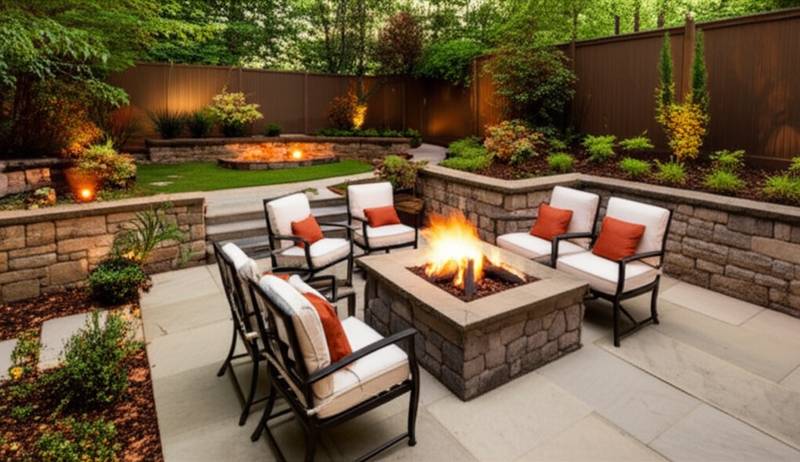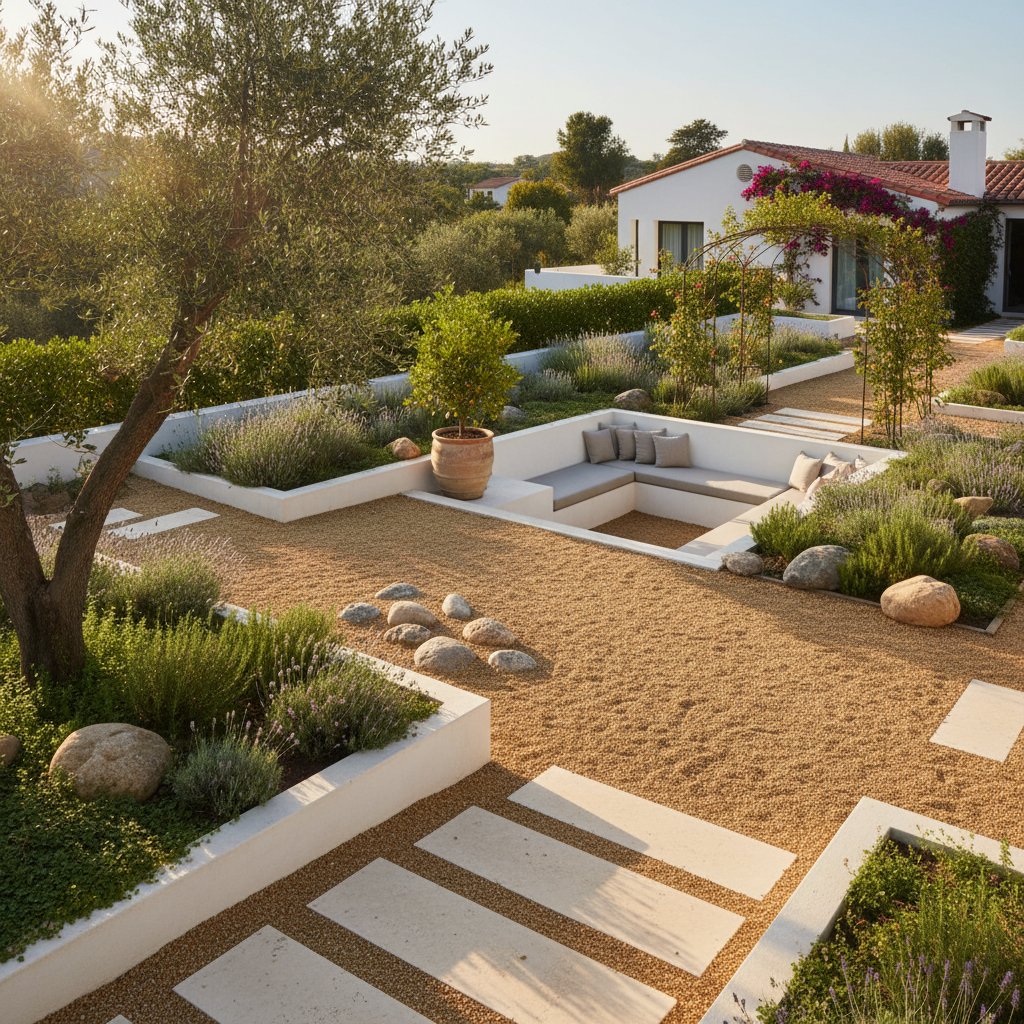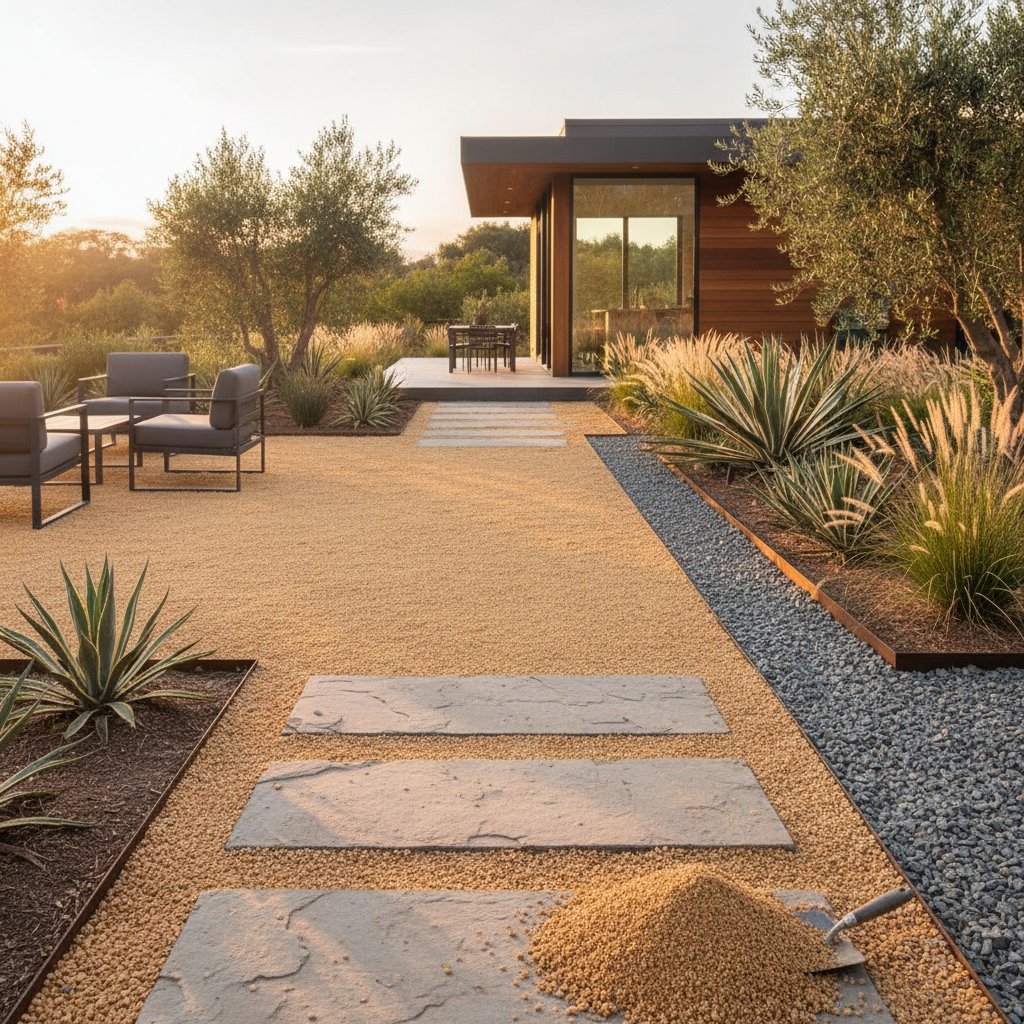Transform Your Small Yard with Fall Hardscaping Ideas
A well-designed small yard offers profound satisfaction. Sunlight filters across a stone path, a seating nook provides seclusion yet openness, and plants integrate seamlessly into their surroundings. Compact spaces demand ingenuity, encouraging efficient use of every area. As fall arrives with cooler temperatures and shifting foliage colors, hardscaping elements such as patios, walls, and pathways emerge prominently. These non-living features form the essential framework that supports seasonal plant textures and tones.
Small yards present initial constraints, yet thoughtful planning turns limitations into opportunities. Every detail counts in such environments. A subtle curve, strategically placed boulder, or modest fire pit alters perception and utility. Fall proves ideal for hardscaping projects, as mild weather facilitates outdoor labor, and the resulting structure influences the yard's appearance throughout subsequent seasons.
Establish Structure in Compact Areas
Structure prevents clutter in limited spaces. Clear organization and uniform materials prove essential for small yards. Hardscaping delivers this foundation by segmenting areas into practical zones, guiding circulation, and establishing visual harmony. Without such elements, even attractive plantings appear disorganized.
View your yard as interconnected micro-rooms, each with a defined role, whether for relaxation or visual pause. Transform a slender side area into a gravel path bordered by herbs. Position a stone bench or petite water element in a rear alcove. Connectivity among components remains crucial; repeating materials, forms, and hues expands the perceived scale and intent.
Select Appropriate Hardscape Materials
Materials in small yards must perform multiple roles, dictating ambiance, light reflection, and usability. Rough stone conveys stability and organic appeal, whereas smooth pavers or concrete impart a sleek, contemporary vibe. Wood introduces softness and coziness, particularly valuable amid fall's richer hues.
Consider these versatile options for confined settings:
- Natural stone: Flagstone or slate provides enduring elegance for patios and stepping stones. Irregular contours foster relaxed yet polished lines.
- Brick: This classic choice infuses charm and thermal comfort. Patterns like herringbone or basket weave add intrigue without dominating the area.
- Gravel: Cost-effective and water-permeable, it adapts easily to informal layouts. Pair it with edging stones or metal borders for precise outlines.
- Poured concrete or pavers: These offer crisp modernity and minimal care. Tint or texture them to align with your residence's aesthetic.
- Wood: Apply it judiciously for decks, seats, or containers. Opt for durable woods or composites to simplify preservation.
Subtle material repetition fosters unity. For instance, employ identical stone for a patio and adjacent low wall to ensure seamless flow without redundancy.
Design for Practical Movement and Harmony
Every inch in small yards serves a purpose. Effective designs direct traffic intuitively, from entry points to destinations. Hardscaping shapes this progression; winding paths encourage leisurely pacing, while linear routes lend formality and elongate narrow zones.
Evaluate user patterns in your space. Does access occur directly from the rear entrance, or does it meander past garden beds? Identify requirements for seating, cooking, or a fire spot. Tailor the layout to accommodate these activities.
Implement these techniques for equilibrium:
- Maintain pathways at a comfortable three-foot width for passage, allowing additional space around seats for rearrangement.
- Incorporate curves sparingly; soft arcs enhance natural flow, but excess can constrict the area.
- Sharpen boundaries, such as between gravel and beds or pavers and turf, to promote neatness.
- Extend upward with walls, lattices, or elevated planters to introduce dimension where floor area lacks.
Introduce Warmth via Fire Elements and Illumination
Autumn nights beckon communal moments, even in modest exteriors. A compact fire installation converts chill into comfort. Portable bowls or integrated gas pits deliver heat efficiently in tight quarters. Select finishes that harmonize with surrounding hardscapes, like stone or brick, for cohesive appeal.
Lighting extends usability as days shorten. Gentle sources sustain accessibility and allure. Employ low-voltage path markers, garlands, or embedded wall units to accentuate surfaces and navigation. Favor subtle radiance over intensity to cultivate mood.
Uplighting from ground level adds intrigue. Illuminate tree bases, masonry, or fountains to generate depth. Paired with autumnal leaf shades, this technique yields understated elegance.
Incorporate Elevation and Stratification
Modest height variations infuse vitality into petite yards. A lone riser to a terrace or multifunctional retaining wall expands dynamism. Such alterations delineate zones sans enclosures.
Leverage existing inclines through terracing with stone or blocks, which controls slopes and supports greenery. Proportions demand care; knee-high barriers balance utility and scale, avoiding dominance.
Elevated beds or integrated seats further outline perimeters. They sustain visual interest and enable inventive plant placements that temper rigid lines. During fall's perennial decline, these fixtures preserve the yard's integrity.
Integrate Greenery with Hardscape Foundations
Hardscaping constructs the yard's core, while vegetation animates it. Complementary pairing enhances both. In confined plots, flora mitigates sharp borders, merges divisions, and delivers annual color shifts. Autumn suits planting of perennials, grasses, or shrubs, allowing root establishment prior to frost.
Follow these principles for synergy:
- Echo forms and palettes. Round patio tiles pair well with curved beds or orb-shaped pots.
- Select scaled flora. Dwarf grasses, compact bushes, or low perennials maintain proportion.
- Position pots strategically. They permit seasonal swaps and vertical accents without fixed builds.
- Buffer margins. Groundcovers like thyme or sedum cascade over stones for fluid junctions.
Fall accentuates hard-soft contrasts as leaves transform. Bare limbs against rugged walls retain allure through intentional arrangement.
Foster Seclusion and Enclosure
Proximity to neighbors or roadways challenges privacy in small yards. Hardscaping crafts intimacy without total seclusion. Low barriers, panels, or overhead frames provide definition while permitting airflow and sunlight.
Apply these approaches:
- Elevate with lattices. Wooden frameworks supporting vines offer screening and foliage without bulk.
- Install partial walls or seat-integrated ledges. They delimit areas, expand seating, and direct sightlines.
- Erect pergolas or arches. These overhead elements evoke room-like shelter on compact patios.
Align privacy features with patio or path materials for wholeness. Prioritize ease over seclusion, ensuring relaxation amid broader environmental ties.
Adapt to Autumn Transitions
Fall imposes a measured pace on gardens, with hardscaping sustaining visual continuity. Stone, brick, and timber deepen under diffused light. Accumulated foliage accentuates crafted contours, rendering even debris purposeful.
Anticipate post-bloom appearances. Does the path capture late-day glow? Do bark, aggregate, and alloy textures engage during dormancy? Forward-thinking ensures enduring aesthetics.
Utilize fall for observation. Note preferred lingering spots across daylight hours. A bench might suit a fence proximity, or a fire unit the kitchen exit. Such insights refine plans pre-implementation.
Amplify Impact Through Subtle Details
Minor enhancements profoundly influence ambiance. Purposeful additions infuse character and invitation sans excess.
Incorporate:
- A central accent. Position a basin, artwork, or vessel to anchor focus and intent.
- Varied tactility. Blend polished rock with coarse aggregate or shiny accents against subdued timber for richness.
- Auditory and kinetic elements. A diminutive cascade or swaying grass enriches senses.
- Dual-purpose fixtures. Stone perches or embedded troughs blend form and utility.
Tailor these to personal cadence, emphasizing significance over saturation.
Manage Upkeep Alongside Aesthetics
Hardscaping minimizes labor yet requires periodic attention. Rake gravel routinely, and cleanse stone surfaces as needed. Compact scales render tasks approachable, but proactive selection averts issues.
Match choices to maintenance tolerance. Natural stone patinas gracefully but benefits from sealants. Gravel economizes yet migrates; composites endure with scant effort, forgoing wood's character. Weigh pros and cons for enduring picks.
Address seasonal duties. Clear pathways of leaves to avert marks, and verify runoff to prevent accumulation. Routine checks of seams, borders, and lights ensure winter readiness.
Extend Your Home Through Thoughtful Design
An optimized small yard seamlessly prolongs indoor living. It welcomes dawn beverages, midday respites, or dusk dialogues fireside. Superior hardscapes mature gracefully, enhancing with time.
Seasonal shifts reveal refinements. A shaded nook or cramped route may emerge. Embrace these evolutions as integral to refinement, yielding a space that evolves with your lifestyle.



